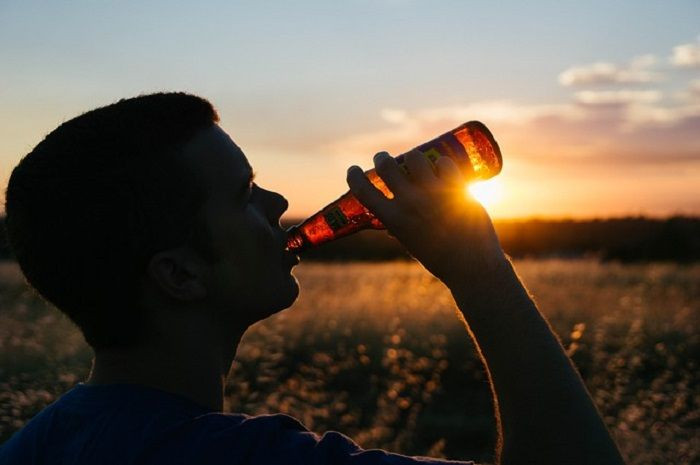Underage Drinking: Study Proposes New 'No-Buy' Guidelines To Better Reduce Youth Exposure To Alcohol Ads

It goes without saying that underage drinking is a major public health concern. According to the Centers for Disease Control and Prevention (CDC), alcohol is the most used and abused drug among youth in the U.S., and despite the alcohol industry's attempt to cut back on alcohol ads targeted toward this population, there's still work to be done. New research published in the Journal of Studies on Alcohol And Drugs not only finds young people are seeing these ads, but as a result, it puts them at greater risk for early alcohol consumption and abuse.
Improving ‘No-Buy’ Lists
A growing body of research suggest alcohol ads fuel underage drinking by helping to create "positive attitudes toward drinking, promoting drinking initiation and excessive drinking," Craig Ross, lead researcher of the study, said in a statement. Although the alcohol industry implemented a no-buy list in 2003 — list of cable television programs and networks to be avoided when purchasing alcohol advertising — the study found about one of every eight alcohol ads seen by children under the legal drinking age was non-compliant with alcohol industry guidelines between 2005 and 2012; cable accounted for most of it. Ross said the goal of the new study was to develop a "comprehensive" approach to cut kids' exposure to alcohol ads.
"Since 2005, kids have been exposed more than 15 billion times to alcohol ads that do not meet industry guidelines," Craig Ross, lead researcher of the study, said in a statement. "Regardless of how no-buy lists have been implemented in the past, there is clearly room for improvement."
Ross and his team tested a new set of no-buy list criteria designed to avoid television ad placements during times of day when audiences skew younger. The criteria also suggest being more selective about ad placements on low-rated cable shows.
If researchers' no-buy list had been universally applied during the study period, it could have eliminated nearly all noncompliant advertising seen by children under the legal drinking age, the results showed. To get their no-buy list to the real world, researchers plan to create quarterly reports that highlight the programs and times of day alcohol ads should avoid.
The ultimate hope is to limit underage drinking by reducing exposure to alcohol ads, Ross added.
Perils of Underage Drinking
While restricting ads wouldn't rid the world of underage drinking, it is an important first step. Previous studies have identified a positive correlation between alcohol ads and higher rates of binge drinking among youth. A 2015 study conducted by researchers from Dartmouth College found teens who were more receptive to TV alcohol ads were more inclined to start drinking or, worse, transition from drinking to binge drinking or hazardous drinking.
Alcohol is responsible for more than 4,300 deaths among underage youth annually, according to the CDC. Despite only representing 11 percent of all alcohol consumed among people aged 12 to 20 years, more than 90 percent of it is consumed in the form of binge drinks.
Underage drinking has also been linked to many health and social problems among youth, including alcohol-impaired driving, poor school performance, sexual activity, and smoking. One study found underage drinking can even inhibit neuronal activity in the hippocampus, where learning and memory control centers are located.
Luckily, a report by the Substance Abuse and Mental Health Services Administration suggests the rate of underage drinking, including binge drinking among those aged 12 to 20, has declined in the past 10 years; however, there are still more than 8.7 million underage drinkers. Ross believes improving new no-buy list guidelines could greatly reduce that number.
Source: Ross C, Brewer R, Jernigan D. The Potential Impact of a "No-Buy" List on Youth Exposure to Alcohol Advertising on Cable Television. Journal of Studies on Alcohol and Drugs. 2016.
Published by Medicaldaily.com



























